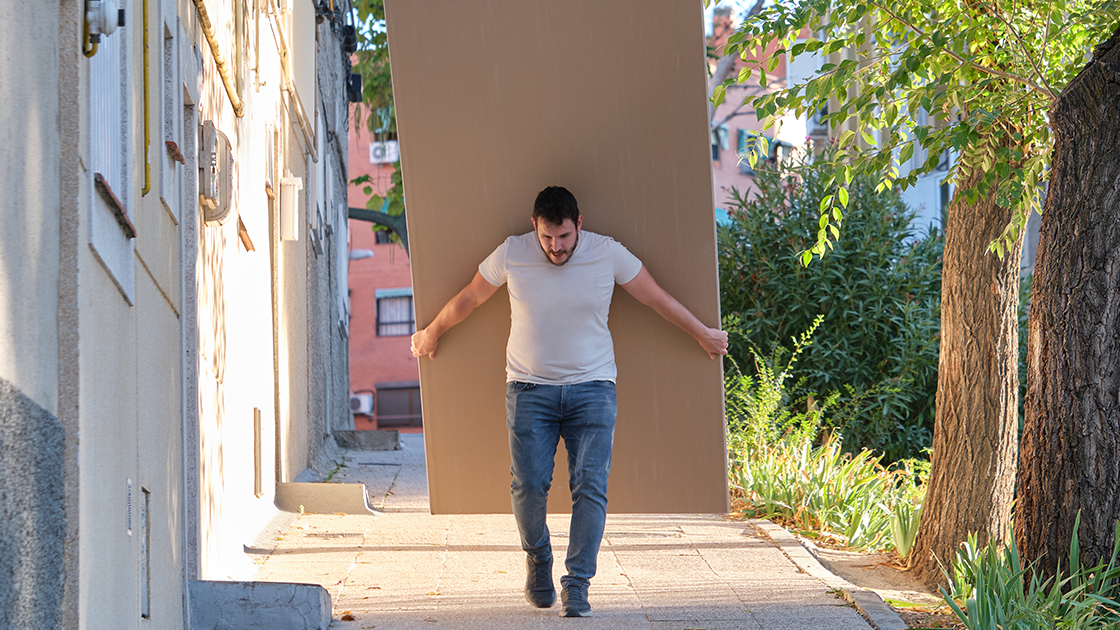Introduction
Back pain affects millions of people worldwide, often leading to hasty decisions about invasive surgical procedures. However, emerging non-surgical treatments like shockwave therapy are revolutionizing pain management and offering hope to those seeking alternatives to the operating room. This comprehensive guide explores how thérapie par ondes de choc can provide effective relief for chronic back pain while avoiding the risks and complications associated with surgical interventions.
The Widespread Impact of Chronic Back Pain
Chronic back pain represents one of the most prevalent musculoskeletal disorders globally, affecting approximately 540 million people worldwide. This debilitating condition significantly impacts quality of life, causing functional limitations that extend far beyond physical discomfort. The socioeconomic burden is staggering, with healthcare costs exceeding billions annually while productivity losses affect both individuals and employers. The pathophysiology of chronic back pain involves complex interactions between nociceptive pathways, inflammatory mediators, and neuroplastic changes in the central nervous system. Unlike acute pain, which serves as a protective mechanism, chronic pain persists beyond normal tissue healing time, typically lasting longer than three months. This persistent pain state often leads to psychological distress, sleep disturbances, and decreased physical activity, creating a cycle that perpetuates the condition.
Why So Many Jump Straight to Surgery
The decision to pursue surgical intervention for back pain often stems from desperation and the promise of immediate relief. Many patients, frustrated by failed conservative treatments, view surgery as their only remaining option. Healthcare systems sometimes inadvertently encourage this approach through referral patterns that bypass comprehensive non-surgical evaluations, leading directly to orthopedic or neurosurgical consultations. Additionally, the medicalization of back pain has created an environment where imaging findings, such as disc herniation or spinal stenosis visualized on MRI, are perceived as requiring surgical correction. However, research consistently demonstrates that anatomical abnormalities don’t always correlate with pain severity or functional limitations. This disconnect between imaging findings and clinical symptoms often leads to unnecessary surgical procedures.
What This Guide Offers You
This evidence-based guide presents shockwave therapy as a viable alternative to surgical intervention for chronic back pain management. Drawing from peer-reviewed research, clinical studies, and real-world applications, we’ll explore the mechanisms, efficacy, and practical considerations of this innovative treatment modality. You’ll discover how extracorporeal shockwave therapy (ESWT) works at the cellular level to promote healing and pain relief. Our comprehensive analysis includes detailed comparisons between surgical and non-surgical approaches, helping you make informed decisions about your treatment journey. We’ll examine contraindications, treatment protocols, and realistic expectations while providing practical guidance for finding qualified providers. This information empowers you to explore conservative options before considering irreversible surgical procedures.
Getting to the Root of Chronic Back Pain
Understanding the underlying mechanisms of chronic back pain is essential for selecting appropriate treatment modalities. The transition from acute to chronic pain involves complex physiological changes that extend beyond simple tissue damage, encompassing neurological, psychological, and social factors that contribute to pain persistence and disability.
What Really Causes Chronic Back Pain?
Chronic back pain etiology is multifactorial, involving several interconnected mechanisms that contribute to persistent pain and disability. Understanding these underlying causes helps guide appropriate treatment selection and patient education:
Structural Causes:
Degenerative disc disease with loss of disc height and hydration
Facet joint arthropathy causing joint inflammation and stiffness
Myofascial dysfunction with trigger points and muscle imbalances
Spinal stenosis creating nerve compression and claudication symptoms
Biomechanical Factors:
Altered movement patterns compensating for pain or dysfunction
Muscle weakness in deep stabilizing muscles of the spine
Joint hypomobility or hypermobility affecting spinal mechanics
Poor postural alignment creating excessive tissue stress
Inflammatory Processes:
Cytokine release including tumor necrosis factor-alpha and interleukin-1 beta
Tissue sensitization from chronic inflammatory mediators
Local tissue irritation perpetuating pain cycles
Systemic inflammation affecting multiple body systems
Neuroplastic Changes:
Central sensitization with nervous system hyperresponsiveness
Allodynia (pain from normally non-painful stimuli)
Hyperalgesia (increased sensitivity to painful stimuli)
Altered pain processing in spinal cord and brain centers

Lifestyle Habits That Make It Worse
Modern lifestyle factors significantly contribute to the development and perpetuation of chronic back pain. Sedentary behavior, poor ergonomics, and inadequate physical conditioning create an environment conducive to musculoskeletal dysfunction. Understanding these modifiable risk factors is crucial for both prevention and treatment success, as addressing lifestyle contributors often determines long-term outcomes.
Poor Posture
Postural dysfunction, particularly forward head posture and increased thoracic kyphosis, creates biomechanical imbalances that stress the lumbar spine. Prolonged maintenance of non-neutral spinal positions leads to adaptive shortening of hip flexors, weakening of deep stabilizing muscles, and increased loading on posterior spinal structures. This postural syndrome results in altered movement patterns and compensatory strategies that perpetuate pain cycles. The modern “text neck” phenomenon, characterized by excessive cervical flexion during device use, creates a cascade of musculoskeletal adaptations extending to the lumbar region. These postural adaptations increase intradiscal pressure, strain posterior ligamentous structures, and create trigger points in paraspinal musculature, contributing to both acute episodes and chronic pain patterns.
Sitting Too Much
Prolonged sitting increases intradiscal pressure by approximately 40% compared to standing, creating mechanical stress on spinal structures. Extended periods of hip flexion lead to adaptive shortening of the psoas muscle and weakening of gluteal muscles, creating muscle imbalances that affect lumbar spine stability. This “lower crossed syndrome” pattern contributes to altered movement mechanics and increased injury risk. Sedentary behavior also reduces cardiovascular fitness and muscular endurance, decreasing the spine’s ability to withstand daily stresses. Additionally, prolonged sitting reduces circulation to spinal tissues, potentially impairing nutrient delivery and waste removal processes essential for tissue health and repair. These physiological changes create an environment conducive to degenerative processes and pain persistence.
Improper Lifting Techniques
Incorrect lifting mechanics, particularly lifting with a flexed spine under load, creates enormous stresses on intervertebral discs and posterior ligamentous structures. The combination of spinal flexion, rotation, and loading represents the most dangerous movement pattern for the lumbar spine, often resulting in acute injury to discs, muscles, or ligaments that may progress to chronic pain conditions. Poor lifting technique often reflects inadequate movement education and insufficient strength in key muscle groups, particularly the deep stabilizing muscles of the core. When these muscles fail to provide adequate spinal stability, larger muscle groups compensate inefficiently, leading to overuse injuries and dysfunctional movement patterns that perpetuate pain and increase re-injury risk.
When Short-Term Pain Turns Chronic
The transition from acute to chronic pain involves complex neuroplastic changes in both peripheral and central nervous systems. Initially protective pain signals become maladaptive when they persist beyond normal tissue healing timeframes. This chronification process involves sensitization of nociceptors, alterations in spinal cord processing, and changes in supraspinal pain modulation systems. Psychological factors, including fear-avoidance behaviors, catastrophic thinking, and depression, significantly influence this transition. The fear-avoidance model demonstrates how anxiety about movement and re-injury leads to activity restriction, physical deconditioning, and increased disability. This psychological component explains why purely biomedical approaches often fail in chronic pain management, necessitating multidisciplinary treatment strategies.
Back Surgery: Hidden Risks You Should Know
While surgical intervention may be appropriate for specific conditions, it’s essential to understand the associated risks, limitations, and potential complications. Many patients underestimate these factors when making treatment decisions, often focusing solely on potential benefits while overlooking significant downsides that could impact long-term outcomes and quality of life.
Common Surgical Options for Back Pain
Lumbar discectomy involves surgical removal of herniated disc material compressing neural structures, typically performed for radiculopathy with corresponding imaging findings. While this procedure can provide excellent relief for leg pain, it doesn’t address underlying disc degeneration and may accelerate degenerative changes at adjacent levels. Success rates vary significantly based on patient selection criteria and symptom duration before surgery.
Spinal fusion procedures aim to eliminate motion at problematic spinal segments by using bone grafts and hardware to create solid bone connections between vertebrae. These complex procedures carry significant risks including hardware failure, non-union, adjacent segment disease, and prolonged recovery periods. Despite widespread use, fusion surgery outcomes for back pain remain controversial, with success rates varying considerably between studies.
Side Effects, Long Recovery, and Failed Surgeries
Surgical complications range from minor issues like superficial infections to serious problems including nerve damage, dural tears, and hardware complications. Infection rates vary by procedure complexity but can reach 2-4% for fusion surgeries, potentially requiring additional procedures and prolonged antibiotic treatment. Deep infections may necessitate hardware removal and revision surgeries, significantly extending recovery time and compromising outcomes. Recovery from back surgery typically requires 6-12 weeks for basic activities, with full recovery taking 3-6 months or longer for complex procedures. This extended recovery period impacts work capacity, family responsibilities, and financial stability. Failed back surgery syndrome affects 10-40% of patients, characterized by persistent or recurrent pain following surgical intervention, often requiring additional procedures or chronic pain management strategies.
Do You Really Need Surgery? A Critical Question
Evidence suggests that many back surgeries may be unnecessary, particularly for non-specific low back pain without clear neurological deficits. The presence of disc herniation or other imaging abnormalities doesn’t automatically indicate surgical necessity, as these findings are common in asymptomatic individuals. Conservative treatment success rates for many conditions rival surgical outcomes without associated risks and complications. Appropriate surgical candidates typically present with progressive neurological deficits, cauda equina syndrome, or severe functional limitations unresponsive to comprehensive conservative treatment. The decision should involve careful consideration of symptom severity, functional impact, imaging correlation, and failure of appropriate non-surgical interventions. Second opinions from conservative treatment specialists can provide valuable perspective before irreversible surgical decisions.

Shockwave Therapy for Back Pain: A Non-Invasive Revolution
Extracorporeal shockwave therapy represents a paradigm shift in non-invasive pain management, offering a scientifically-proven alternative to surgical intervention. This innovative treatment modality harnesses the power of acoustic waves to stimulate healing processes at the cellular level, providing effective relief for various musculoskeletal conditions while avoiding the risks associated with invasive procedures.
Qu'est-ce que la thérapie par ondes de choc et comment fonctionne-t-elle ?
Extracorporeal shockwave therapy utilizes ondes acoustiques de haute énergie delivered non-invasively to affected tissues. These pressure waves create mechanical stress that triggers multiple biological responses, including neovascularization (formation of new blood vessels), cellular membrane permeabilization, and release of growth factors. The mechanical energy stimulates tissue repair mechanisms while simultaneously providing analgesic effects through neurological pathway modulation. The treatment works through mechanotransduction, converting mechanical energy into biochemical signals that promote healing. Shockwaves induce cavitation effects within tissues, creating microscopic bubbles that stimulate cellular activity and promote tissue regeneration. This process enhances local circulation, reduces inflammation, and accelerates the body’s natural healing response without requiring surgical intervention or prolonged recovery periods.
How It Targets Muscles, Fascia, and Tendons
Shockwave therapy specifically targets myofascial structures, breaking down adhesions and trigger points that contribute to pain and dysfunction. The acoustic waves penetrate deep into tissues, reaching areas that manual therapy techniques cannot effectively address. This deep tissue penetration allows treatment of chronic muscle tension, fascial restrictions, and tendinopathies that often contribute to chronic back pain syndromes. The therapy promotes collagen synthesis and tissue remodeling, improving the structural integrity of affected tissues. For fascial dysfunction, shockwaves help restore normal tissue mobility and reduce restrictions that limit movement and contribute to compensatory movement patterns. This comprehensive tissue treatment addresses multiple contributing factors to chronic pain, providing more effective relief than surface-level interventions.
Conditions That Respond Well to Shockwave
Shockwave therapy demonstrates exceptional efficacy across various musculoskeletal conditions affecting the back and surrounding structures. Clinical evidence supports its use for multiple pain generators that contribute to chronic back pain:
Trigger points in paraspinal and gluteal muscles
Chronic muscle spasms and tension patterns
Fascial restrictions limiting normal movement
Muscle imbalances contributing to postural dysfunction
Insertional tendinopathies at muscle-bone interfaces
Chronic tendon inflammation and degeneration
Gluteal tendinopathy affecting hip and back function
Lower back muscle attachment point problems
Joint-Related Dysfunction:
Sacroiliac joint dysfunction and associated restrictions
Facet joint syndrome with surrounding tissue involvement
Joint capsule restrictions limiting spinal mobility
Compensatory tissue tension from joint problems
Syndromes douloureux chroniques :
Fibromyalgia tender points in back region
Chronic regional pain syndrome affecting multiple tissues
Post-surgical scar tissue and adhesions
Failed back surgery syndrome with ongoing soft tissue problems
Shockwave Therapy vs. Surgery: Evidence-Based Insights
Comparative research between shockwave therapy and surgical interventions provides compelling evidence for non-surgical approaches in appropriate candidates. Understanding these research findings helps patients and healthcare providers make informed decisions based on scientific evidence rather than anecdotal experiences or marketing claims from surgical or device manufacturers.
Backed by Research: What Science Says
Multiple randomized controlled trials demonstrate shockwave therapy’s efficacy for musculoskeletal pain conditions. A systematic review of 23 studies involving over 1,400 patients showed significant pain reduction and functional improvement following shockwave treatment for various conditions. The evidence quality continues improving as more rigorous studies examine optimal treatment parameters, patient selection criteria, and long-term outcomes. Research comparing shockwave therapy to surgical interventions for specific conditions shows comparable or superior outcomes in many cases. Studies examining plantar fasciitis treatment demonstrate that shockwave therapy provides equivalent pain relief to surgical release procedures while avoiding surgical risks and recovery time. Similar findings exist for calcific tendinitis and other conditions commonly treated surgically.
Real Patients, Real Relief: Success in Action
Clinical studies report success rates ranging from 65-91% for various musculoskeletal conditions treated with shockwave therapy. These outcomes compare favorably to surgical success rates while offering significant advantages in terms of recovery time, complication rates, and cost-effectiveness. Patient satisfaction scores consistently remain high, with most individuals reporting meaningful improvement in pain levels and functional capacity. Long-term follow-up studies demonstrate sustained benefits lasting 12-24 months following treatment completion. Unlike surgical interventions that may require additional procedures or develop complications over time, shockwave therapy benefits appear durable with minimal risk of treatment-related problems. This long-term effectiveness makes it an attractive option for patients seeking lasting relief without ongoing intervention requirements.
Faster Recovery, Lower Risk, Proven Results
Shockwave therapy requires no recovery time, allowing patients to resume normal activities immediately following treatment. This contrasts sharply with surgical procedures requiring weeks to months of restricted activity and gradual return to full function. The ability to maintain work and family responsibilities during treatment represents a significant advantage for most patients. Complication rates for shockwave therapy remain extremely low, with minor side effects like temporary soreness or mild bruising affecting less than 5% of patients. Serious complications are virtually non-existent, providing a safety profile that far exceeds surgical interventions. This favorable risk-benefit ratio makes shockwave therapy an ideal first-line treatment for appropriate candidates before considering invasive procedures.
Que peut-on attendre d'un traitement par ondes de choc ?
Understanding the treatment process, including session requirements, sensations, and potential side effects, helps patients prepare for shockwave therapy and maintain realistic expectations. Proper preparation and education significantly impact treatment compliance and outcomes, making this information crucial for treatment success.
How Many Sessions Are Needed for Lasting Relief?
Most conditions require 3-6 treatment sessions spaced 1-2 weeks apart for optimal results. This treatment schedule allows sufficient time for tissue healing between sessions while maintaining therapeutic momentum. Acute conditions may respond to fewer sessions, while chronic conditions typically require the full treatment protocol for maximum benefit. Some patients experience significant improvement after the first session, while others require completion of the full protocol. Treatment protocols are individualized based on condition severity, chronicity, and patient response to initial sessions. Healthcare providers monitor progress throughout the treatment course, adjusting parameters as needed to optimize outcomes. Some patients may benefit from maintenance sessions every 3-6 months to sustain long-term benefits, particularly for chronic conditions with multiple contributing factors.
Is It Painful? Understanding the Sensation and Side Effects
Patients typically describe shockwave therapy sensations as deep, rhythmic pressure or mild discomfort rather than sharp pain. Most individuals tolerate treatments well without requiring pain medication or local anesthesia. The sensation intensity can be adjusted based on patient comfort levels while maintaining therapeutic effectiveness. Treatment comfort generally improves with subsequent sessions as tissues respond to therapy. Common side effects include temporary soreness, mild swelling, or skin redness at the treatment site, typically resolving within 24-48 hours. These minor effects indicate normal tissue response to treatment and don’t interfere with daily activities. Serious side effects are extremely rare, with no reported cases of nerve damage, infection, or other significant complications when appropriate protocols are followed by qualified providers.
Who Can and Can’t Use Shockwave Therapy?
Determining appropriate candidates for shockwave therapy requires careful evaluation of medical history, current conditions, and treatment goals. Understanding eligibility criteria helps ensure safe and effective treatment outcomes:
Candidats idéaux :
Patients with chronic musculoskeletal pain unresponsive to conservative treatments
Individuals seeking alternatives to surgical intervention
Those with myofascial pain, tendinopathies, and chronic muscle tension
Patients of all ages, from young athletes to elderly individuals
People with degenerative conditions seeking non-invasive relief
Individuals wanting to avoid medication dependence for pain management
Contre-indications absolues :
Pregnancy or suspected pregnancy
Malignant tumors in or near the treatment area
Severe bleeding disorders or coagulopathies
Active use of anticoagulant medications
Acute infections at the treatment site
Open wounds or skin breakdown in treatment area
Relative Contraindications (Require Evaluation):
Pacemakers or implanted electrical devices
Severe osteoporosis with fracture risk
Neurological disorders affecting sensation
Recent steroid injections in treatment area
Compromised immune system function
History of poor wound healing or keloid formation

Success Stories: From Pain to Possibility
Real patient experiences provide valuable insights into shockwave therapy’s practical benefits and limitations. These case studies illustrate typical treatment courses and outcomes while demonstrating the therapy’s potential to transform lives affected by chronic pain conditions.
Case Study: Avoiding Surgery at Age 52
Sarah, a 52-year-old office manager, developed chronic low back pain with radiating leg symptoms following a lifting injury. MRI revealed disc herniation with nerve compression, and two orthopedic surgeons recommended microdiscectomy. Seeking alternatives, she pursued shockwave therapy targeting myofascial trigger points and paraspinal muscle tension contributing to her symptoms. After completing six treatment sessions over eight weeks, Sarah experienced 80% pain reduction and complete resolution of leg symptoms. Follow-up at six months showed sustained improvement with return to full work duties and recreational activities. She avoided surgical risks while achieving excellent functional outcomes, demonstrating shockwave therapy’s potential to prevent unnecessary surgical interventions.
Testimonial: From Bedridden to Fully Mobile
Michael, a 45-year-old construction worker, suffered debilitating back pain that left him unable to work or perform basic activities. Previous treatments including medications, injections, and physical therapy provided minimal relief. Facing potential disability retirement and surgical recommendations, he tried shockwave therapy as a final conservative option before considering invasive procedures. Treatment focused on chronic muscle spasms and fascial restrictions throughout his lumbar region. After completing five sessions, Michael experienced dramatic improvement, returning to full work capacity within three months. Two years later, he remains pain-free and fully functional, crediting shockwave therapy with saving his career and quality of life while avoiding surgical complications and extended recovery.
How to Begin Your Shockwave Therapy Journey
Starting shockwave therapy requires careful provider selection and proper preparation to ensure optimal outcomes. Understanding the process, from initial consultation through treatment completion, helps patients make informed decisions and maximizes treatment success potential.
Finding a Licensed and Experienced Provider Near You
Seek providers with specific training in shockwave therapy applications for musculoskeletal conditions. Physical therapists, chiropractors, and physicians with appropriate certification and experience offer the best treatment outcomes. Verify credentials, ask about training background, and inquire about the number of patients treated with similar conditions. Experience with your specific condition significantly impacts treatment success. Research provider reputation through patient reviews, professional references, and outcome data when available. Established clinics with multiple providers often offer more comprehensive care and backup support throughout treatment. Consider convenience factors like location, scheduling flexibility, and insurance acceptance, but prioritize qualifications and experience over convenience when making final decisions.
Questions You Should Ask Before Your First Session
Inquire about the provider’s specific experience treating your condition with shockwave therapy. Ask about expected treatment protocols, number of sessions required, and realistic outcome expectations. Understanding the provider’s approach to treatment planning and progress monitoring helps ensure comprehensive care throughout the treatment process. Discuss equipment specifications, treatment parameters, and any modifications needed for your specific condition. Ask about side effects management, activity restrictions, and integration with other treatments you may be receiving. Clear communication about treatment expectations, costs, and follow-up care prevents misunderstandings and ensures smooth treatment progression from initial consultation through final session.
Final Takeaway: Shockwave First, Surgery Last
The evidence strongly supports exploring shockwave therapy before considering surgical intervention for many chronic back pain conditions. This non-invasive treatment offers comparable outcomes to surgery while avoiding significant risks, complications, and recovery time associated with invasive procedures. The favorable risk-benefit ratio makes shockwave therapy an logical first-line treatment for appropriate candidates. Surgery should remain reserved for specific indications with clear neurological deficits or structural problems unresponsive to comprehensive conservative treatment. The irreversible nature of surgical procedures demands careful consideration of all alternatives, including emerging treatments like shockwave therapy that continue showing promising results in clinical practice and research settings.
Foire aux questions (FAQ)
Yes — in many cases, especially for chronic back pain caused by soft tissue injuries or musculoskeletal imbalances. Shockwave therapy stimulates healing, improves blood flow, and reduces pain, helping patients avoid invasive options like spinal fusion or discectomy.
Most patients describe it as rhythmic pulses or “taps” — sometimes mildly uncomfortable, but never intolerable. It’s nothing like surgery or injections. Some even compare it to deep tissue massage with a futuristic twist.
Because it doesn’t just mask pain — it targets the biological cause. Shockwave boosts cell repair, breaks up scar tissue, and restarts the body’s stalled healing response. If heat packs, pain meds, and rest haven’t worked, this cellular-level reboot often does.
Most people see improvement within 3–6 sessions. It’s not a lifelong treatment — it’s a short-term plan with long-term impact. Your provider will customize the number of treatments based on your condition’s severity and your response.
Not weird — but temporary redness, tingling, or soreness in the treated area can happen. It’s usually a sign your body is reacting and healing. Serious complications are rare, especially with experienced providers and FDA-cleared devices.
Yes — no anesthesia, no downtime. Many people return to work or even light exercise the same day. It’s non-invasive and requires zero recovery bed rest, unlike surgery.
Références
- Améliorer les soins chiropratiques grâce à la thérapie par ondes de choc
- La thérapie par ondes de choc peut-elle être la solution au mal de dos chronique ? Les experts se prononcent
- Efficacité et sécurité de la thérapie extracorporelle par ondes de choc pour les affections orthopédiques : une revue systématique des études répertoriées dans la base de données PEDro
- Efficacité et sécurité de la thérapie extracorporelle par ondes de choc dans la lombalgie chronique : revue systématique et méta-analyse de 632 patients
